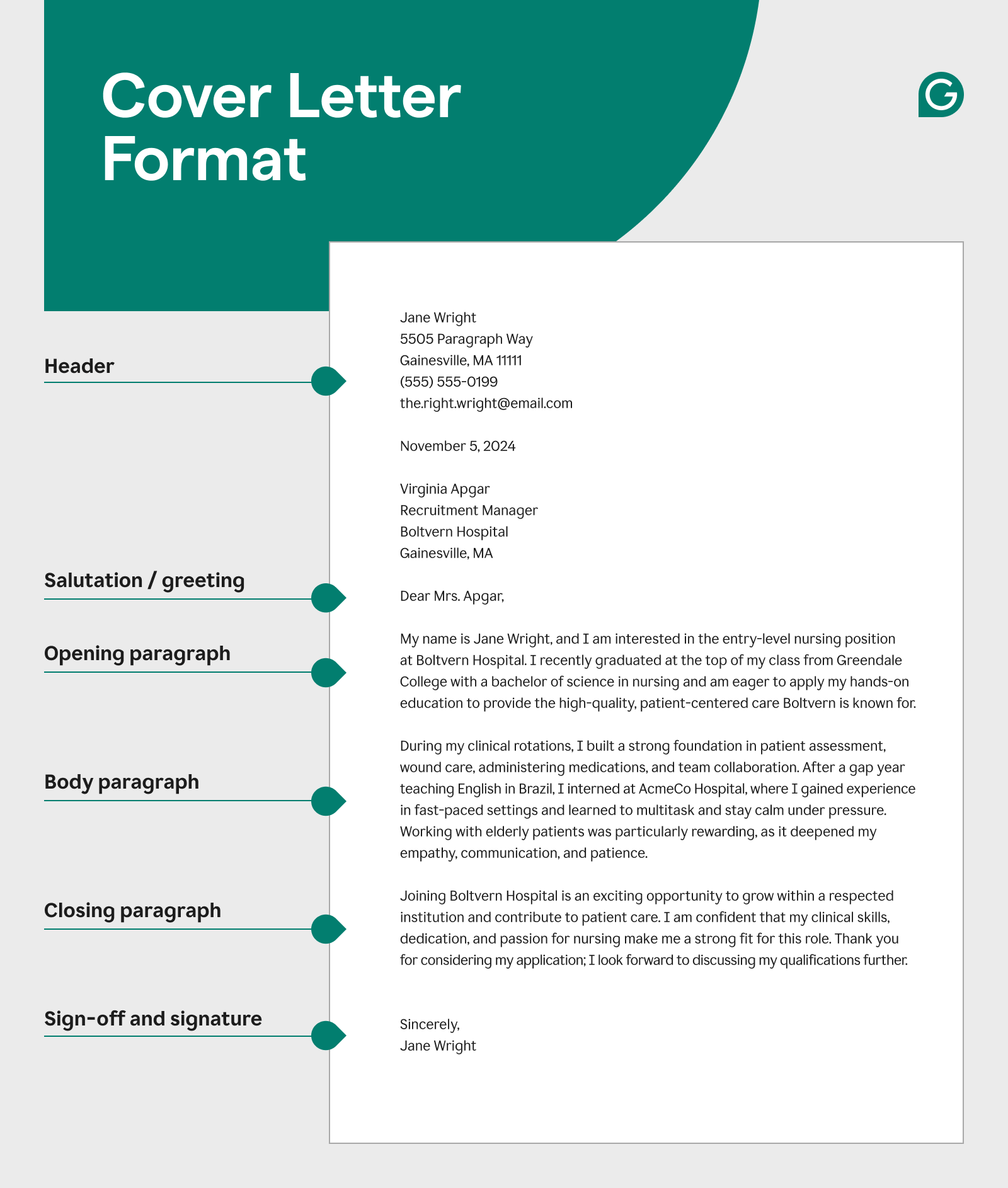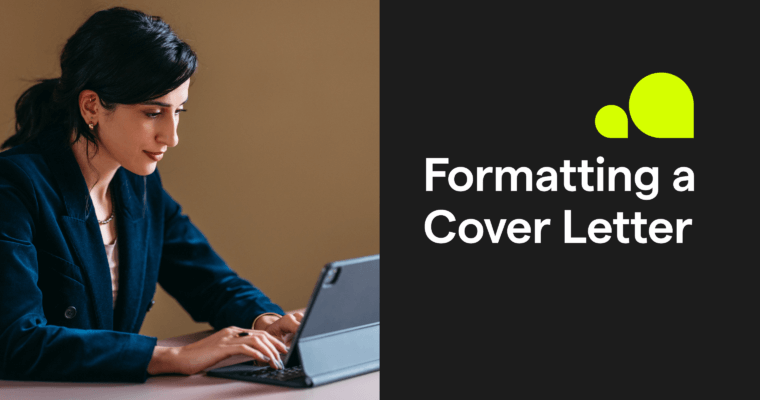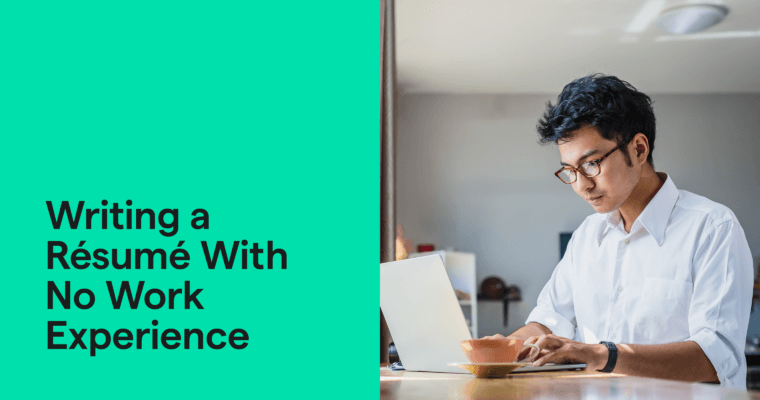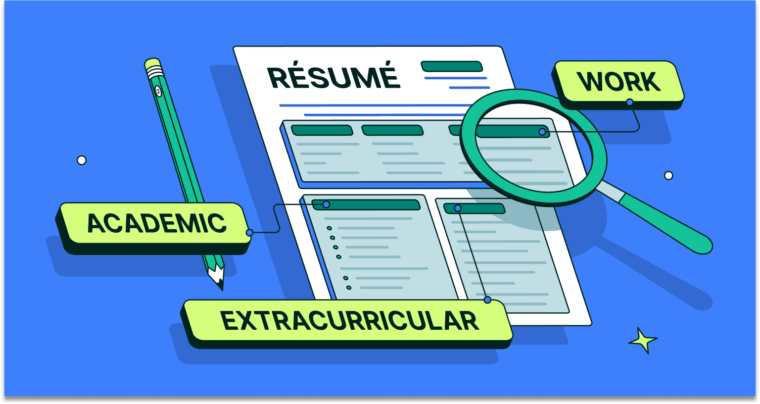
Getting your dream job isn’t easy, but a well-crafted cover letter can be exactly what gets you hired. If you know how to write a cover letter, you can demonstrate your aptitude and personality and forge a connection with the hiring manager—things a résumé or CV can’t do on their own.
Below we explain in detail how to write a cover letter. We share the key parts of a well-written cover letter and discuss how to write each section to “wow” hiring managers and leave a lasting impression.
Table of contents
Preparing to write a cover letter
How to write a cover letter FAQ
What is a cover letter?
A cover letter is a document sent to hiring managers that describes your work history, professional skills, education, and other data pertinent to your career while highlighting why you’re a strong fit for the specific role and company. It is usually sent together with a résumé or CV as a way of demonstrating your personality and explaining the reasons why you are the right candidate for the position. You can read more information in our guide What Is a Cover Letter?
Why do employers ask for cover letters?
While cover letters repeat some of the information on your résumé, they also add context and additional details that give hiring managers a fuller idea of who you are. A well-written cover letter reveals both your personality and your communication skills, important factors for getting a new job.
Hiring managers like cover letters because they can see more than just your fact sheet. Cover letters also give job applicants the opportunity to mention details that don’t fit in a résumé, such as motivations for applying, a connection to the company, or whether your values and work style align with the company culture.
Preparing to write a cover letter
Before you begin to write your cover letter, prepare what you’re going to say. That way you can be sure to include everything you want without having to worry about it while you write.
For starters, make sure your résumé/CV is up-to-date. You’ll be repeating some of this information, so it’s good to have it handy as a reference. You also don’t want any contradiction between your cover letter and résumé.
From there, consider what aspects of yourself and your professional experience make you a valuable candidate for the job. Is it your education? Your work experience? Do you have a personal connection with this line of work? You can use cover letters to stand out from the other applicants, especially if your résumé alone isn’t enough.
You should find a way to mention your best qualities in a cover letter if they’re relevant to the job. While you can figure out exactly when to mention them later, having a list of these qualities can save you time during the writing process.
Moreover, we recommend researching the company and its culture before writing a cover letter. Take a look at its website, social media, and any mentions in the news to understand what it’s looking for. This will help you choose the appropriate tone and give you ideas about what to mention.
Once you know what you want to say, it’s time to get started on the actual writing. If the thought of writing from scratch is overwhelming, consider using an AI cover letter generator for the first draft and then editing it to fit your writing style. While AI cover letters may sound … well, like AI … using an AI tool for a first draft can give you something to build from, which is very useful when you’re just getting started. It doesn’t have to be complicated; you can use our free AI cover letter generator to generate something in just a few clicks.
How to write a cover letter
Ideally, cover letters should be about three full-sized paragraphs, although it’s acceptable to add smaller paragraphs as an introduction or conclusion. Still, three paragraphs is all you need, and cover letters benefit from being brief.
However, cover letters also have special conventions for headers, greetings, and sign-offs, some of which are not always self-evident. Below, we explain the best practices for writing each, along with what to put in those three paragraphs.
Header and contact information
If you’re writing a formal cover letter, the header is a big deal. Traditionally, the header of a cover letter has your contact information, the date, and the employer’s contact information in the upper-left corner of the page.
To be specific, write your name, address, phone number, and email first. Leave an empty line, and then write the date, spelling out the full month. Leave another empty line, and then write your employer’s name, title, company, and/or address. Add one more empty line, and then begin your letter with the greeting. We explain more details in our guide on cover letter format.
This formal practice is only for printed cover letters or file attachments, however. If you’re writing a cover letter as an email, you can forget the header and begin directly with the greeting.
Greeting or salutation
Use the name of the hiring manager if you know it, along with any honorifics like “Mrs.” or “Dr.” A simple “Dear … ” at the beginning is fine. Use a comma at the end, and then leave an empty line before continuing your cover letter.
Dear Dr. Alfonso Pepper,
Dear Mr. Deere,
If, however, you don’t know the recipient’s name, you have a few options. The formal option is to open with To Whom It May Concern, but more casual alternatives include Dear Hiring Manager, Dear Sir or Madam, and Dear [Company] Recruiter.
Opening paragraph
The opening paragraph of your cover letter has to hook the reader. Most likely, the hiring manager is reading dozens of cover letters, sometimes one after another, so your cover letter opener only has a limited window to stand out from the crowd.
You can demonstrate both your enthusiasm and your capabilities by simply mentioning the reason you want this position. Employers prefer candidates who want to work with them, so take some time to explain why you’re passionate about this particular role.
Include your best highlights to make a good first impression: mention an accomplishment, personal statistic, or how hiring you could solve an existing problem for the company. If you can’t think of anything, talk about your vision for a future working there, or why you’d be the perfect fit for this particular company.
Also, state the position you’re applying for and where you heard about the job. The opening paragraph should end with a lead-in or transition to the next paragraph, where you discuss your work history and job expertise.
Body paragraph
Your second paragraph is the substance of a cover letter, the filling of a sandwich. Here is where you present your work history, achievements, skills, and any other benefits of hiring you that didn’t fit in the first paragraph. For this, data and statistics work well; state how you benefited other companies with quantifiable results, such as “increased sales by 15%” or “maintained an error rate of 0.1%.”
For the most part, body paragraphs repeat the information of your résumé/CV, but they also add context. You can explain, in your own words, what you learned at a previous job or why you don’t work there anymore.
You should tailor your writing to the company and the position. Try to match the style and voice of the initial job posting, or if that’s unavailable the website text. Also, consider using keywords and the language from the company’s job post; if it mentions being “punctual” and “diligent” in the post, use those words in the cover letter to describe yourself. Some companies use automatic keyword scans to search through applicants, so this strategy can help you get noticed as well.
Closing paragraph
The rules for how to end cover letters follow traditional story structure. The closing should reiterate the main points and end in a memorable way, like other conclusions.
Most closing paragraphs include a call to action, a statement that urges the reader to do something, like “click here” or “buy now.” The call to action for cover letters usually revolves around some kind of follow-up, such as requesting an interview.
Thanking the company for the opportunity to apply is an old-fashioned convention, but it works with formal or traditional applications. If you can, restate your enthusiasm in the closing paragraph, just to remind them.
Sign-off
Cover letters use professional sign-offs, often a single word followed by the sender’s signature. Standard sign-offs include:
- Regards,
- Best,
- Sincerely,
How to write a cover letter: example
Dear AcmeCo,
As a skilled sales representative in the tech and electronics industry, I am excited to apply for the sales associate role listed on LinkedIn. AcmeCo’s commitment to groundbreaking AI innovation has always impressed me, and I am eager to bring my expertise in strategic sales and customer-centric service to a company I’ve followed and admired for years. With a proven track record of exceeding targets and building strong client relationships, I am confident I can contribute to your team’s continued success.
In my previous role at Boltvern, I built a loyal customer base and increased client retention by 25% by prioritizing tailored solutions and consistent follow-up. I was their youngest employee to be promoted to Senior Sales Representative in just under two years. Not only do I understand the client-side aspect of sales, but also I have a Bachelor’s in Computer Science from Cornell, which allowed me to understand the intricacies of the product and communicate its benefits effectively. While it’s unfortunate that my time in Weyland was cut short due to company-wide layoffs, I am eager to bring my skills to AcmeCo’s sales team.
My background in sales, combined with my passion for technology and commitment to client success, makes me an ideal candidate for this role. I look forward to the opportunity to discuss how my skills align with AcmeCo’s goals, and I am available for an interview at your convenience. Thank you for considering my application.
Best, Jonathan Conner
How to write a cover letter: template
Here’s a cover letter template you can use to write your own cover letter. Simply plug in your information to the corresponding part. For more details, check out our guide on cover letter format.
[Your name] [Address] [Phone number] [Email]
[Today’s date]
[Recipient’s name] [Recipient’s professional title] [Company name] [Address]
[Salutation/greeting],
[Introduce yourself. Explain your profession, the position title you’re applying for, and how you heard about it. Briefly mention why this role and company interest you and why you’d be a good match. Show enthusiasm. End with a sentence that transitions or leads into the next paragraph.]
[Summarize your job history, focusing on relevant experience. Add extra context, such as what you learned from these jobs or why certain experiences prepared you for this role. Feel free to address problems with your résumé, like gaps or short tenures. Mention related skills and achievements and any quantifiable results or metrics.]
[Reiterate the main benefits of hiring you, including any soft skills or attributes that align with the company culture. Restate your enthusiasm, thank them for considering your application, and add a call to action to suggest a follow-up, such as scheduling an interview.]
[Simple sign-off], [Signature]
Key takeaways for how to write a cover letter
- A cover letter complements your résumé by showcasing your personality and enthusiasm.
- Keep the letter concise—ideally three paragraphs on a single page.
- Tailor the content to the company and show a connection to its work culture.
- Repeat keywords and specific qualities mentioned in the job description.
- End with a polite call to action, such as requesting an interview.
How to write a cover letter FAQ
How do I write a cover letter?
Cover letters fit well into a three-paragraph structure: an opening paragraph that introduces yourself in a way that stands out, a middle paragraph that presents your job history and professional skill, and a closing paragraph that recaps the information and requests a follow-up. Pay attention to specific details on formatting, too, such as what to include in the header and which salutation or sign-off to use.
What do employers look for in a cover letter?
Employers and hiring managers use cover letters to gauge an applicant’s personality, communication style, and fit for the role and company. The way you write your cover letter, as well as what you choose to discuss, helps employers decide how well you’d fit in the position. Repeating keywords and phrases from the job description also signals that you understand the role and are a good match.
What should I include in a cover letter?
Your cover letter should include any work history, professional skills, and qualities that make you a good fit for the role. Use this opportunity to highlight your personality, address résumé gaps, or explain short tenures.






